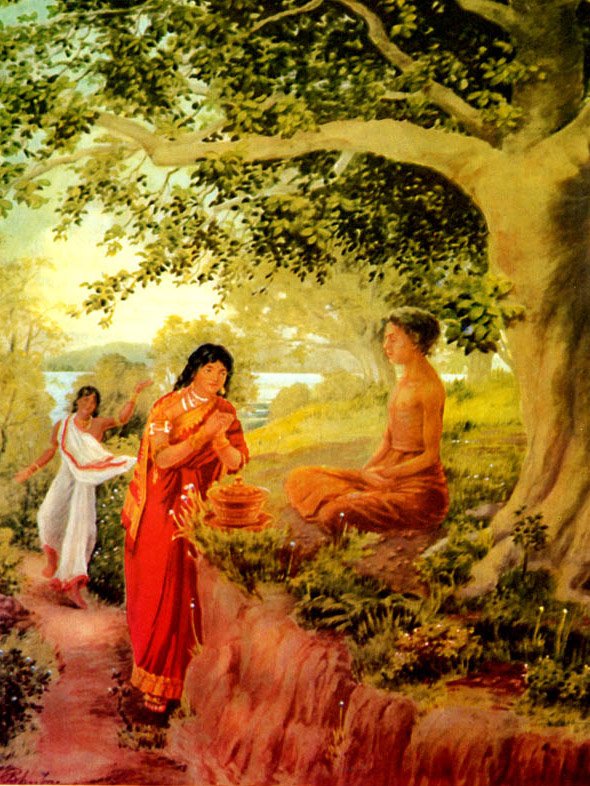Apadana commentary (Atthakatha)
by U Lu Pe Win | 216,848 words
This is the English translation of the commentary on the Apadana (Atthakatha), also known as the Visuddhajana-Vilasini. The Buddhist stories known as apadanas refer to biographies of Buddhas, Buddhist monks and nuns. They are found in the Pali Canon (Khuddaka Nikaya), which is the primary canon of Theravada Buddhism. Alternative titles: Visuddhaja...
Commentary on Biography of the thera Paduma
Stanzas starting with Catusaccam pakasanto constitute the biography of the venerable thera Paduma. This one also, having done a load of merit in the presence of former Buddhas, was reborn in a family house when the brilliant light of truth (dhamma) was kept alight by the sage Padumuttara; set up a household life and was well known as being endowed with prosperity. He had believing faith in the Master, listened to the truth (dhamma), together with the massive multitude of men, and stood holding a bouquet of lotus flowers (paduma), together with a flag. Along with the flag, the bouquet of lotus flowers threw themselves up into the sky. On having seen that strange phenomenon, he became excessively pleasure-minded. As long as his span of life lasted he did good deeds and was reborn in heaven at the all-round end of his life, Like unto a flag, he was well-known and honoured in the six sensual celestial worlds. He enjoyed divine bliss as well as human bliss of world-king and was reborn in the house of a wealthy family endowed with pious faith, when this Buddha arose. As he grew up in due course, pious faith sprang up in him, he renounced the world at the age of five even; and but before long, became an arahat, and well known as the thera Paduma, by the name of the meritorious deed done by him.
67. On having recollected his own former deed, he became pleasure-minded, uttered this stanza starting with Catusaccam pakāsento in order to make manifest the deed done by him formerly. There sacca (truth) true, unfalse, not distorted is truth (sacca) properly brought four noble truths by way of pain (dukkha) origin of pain (samudaya), cessation of pain (nirodha) and the noble path (magga); making manifest that four-fold noble truth, making apparent in the world; thus, is the meaning. Amatam vuṭṭhim (immortal rain) the rain of truth (dhamma), showers, raining down the shower of beater or rain-like great immortal nibbāna, pouring that rain-shower down, wetting this human world together with divine world, extinguishing the fire of depravity (kilesa); thus, is the meaning.
68. Sadhajam padumam gayha (having taken the lotus flower with a flag), caught hold of the bouquet of lotus flowers making the lotus one and the same together with the flag; thus, is the meaning. Āḍḍhakose ṭhito aham, I stood having lifted both up thus, is the meaning. The rest is but clear in meaning everywhere.
The commentary on the biography of the thera Paduma has ended.
